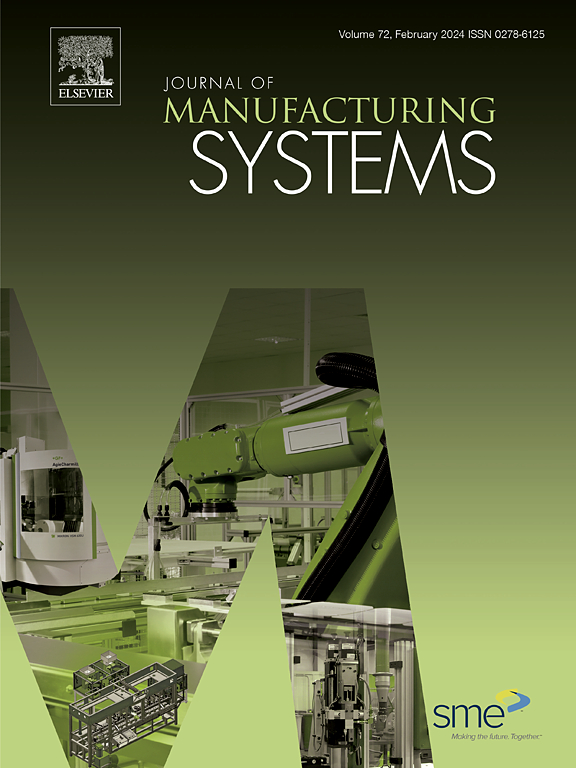Automatic 3D inspection method for AR-assisted assembly based on virtual-to-real registration
IF 12.2
1区 工程技术
Q1 ENGINEERING, INDUSTRIAL
引用次数: 0
Abstract
Augmented reality (AR) has been widely employed in intelligent assembly tasks to improve assembly efficiency by layering virtual instructions onto real assemblies, providing operators with step-by-step guidance. However, current AR-assisted assembly systems are limited to being visualization tools, requiring manual control of the guide program by operators and potentially causing distractions and increased operational load. Furthermore, these systems lack the ability to detect incorrect assembly during operation, leading to assembly failures without manual inspection. To address these issues, we propose an automatic 3D inspection method based on virtual-to-real registration that leverages cross-domain texture registration and 6D pose registration to align real assembly images with virtual 3D CAD models. This method conducts a 3D assembly inspection by assessing the similarities between real assembly and its virtual CAD instruction, not only from texture but also from spatial pose relations, improving inspection accuracy while retaining 2D real-time computing. By integrating the inspection results, the AR system can automatically verify assembly correctness and proceed to the next guide program only when a successful assembly is confirmed, eliminating any need for extra instructions from the operator. In case of assembly failure, the computed results are fed back to the operator to assist in correcting errors during assembly, thereby improving assembly efficiency.
基于虚实配准的ar辅助装配三维自动检测方法
增强现实技术(AR)已广泛应用于智能装配任务,通过将虚拟指令分层到真实装配上,为操作员提供逐步指导,提高装配效率。然而,目前的ar辅助装配系统仅限于可视化工具,需要操作人员手动控制导向程序,并且可能导致分心和增加操作负荷。此外,这些系统在操作过程中缺乏检测错误装配的能力,导致在没有人工检查的情况下出现装配故障。为了解决这些问题,我们提出了一种基于虚拟到真实配准的自动3D检测方法,该方法利用跨域纹理配准和6D姿态配准将真实装配图像与虚拟3D CAD模型对齐。该方法通过评估真实装配与其虚拟CAD指令之间的相似性,不仅从纹理上,而且从空间位姿关系上进行三维装配检测,在保持二维实时计算的同时提高了检测精度。通过整合检查结果,增强现实系统可以自动验证装配正确性,并在确认装配成功后进入下一个指导程序,从而无需操作员提供额外的指令。在装配失败的情况下,将计算结果反馈给操作人员,以帮助纠正装配过程中的错误,从而提高装配效率。
本文章由计算机程序翻译,如有差异,请以英文原文为准。
求助全文
约1分钟内获得全文
求助全文
来源期刊

Journal of Manufacturing Systems
工程技术-工程:工业
CiteScore
23.30
自引率
13.20%
发文量
216
审稿时长
25 days
期刊介绍:
The Journal of Manufacturing Systems is dedicated to showcasing cutting-edge fundamental and applied research in manufacturing at the systems level. Encompassing products, equipment, people, information, control, and support functions, manufacturing systems play a pivotal role in the economical and competitive development, production, delivery, and total lifecycle of products, meeting market and societal needs.
With a commitment to publishing archival scholarly literature, the journal strives to advance the state of the art in manufacturing systems and foster innovation in crafting efficient, robust, and sustainable manufacturing systems. The focus extends from equipment-level considerations to the broader scope of the extended enterprise. The Journal welcomes research addressing challenges across various scales, including nano, micro, and macro-scale manufacturing, and spanning diverse sectors such as aerospace, automotive, energy, and medical device manufacturing.
 求助内容:
求助内容: 应助结果提醒方式:
应助结果提醒方式:


